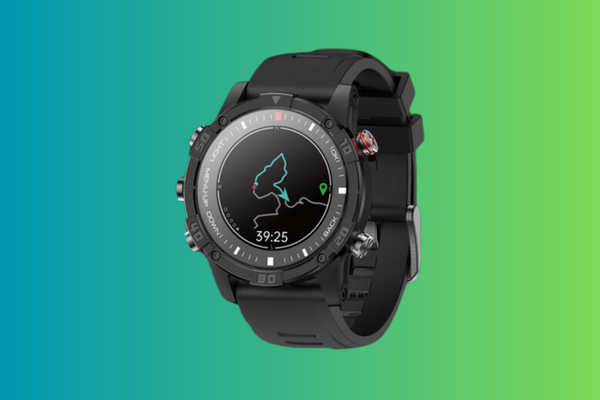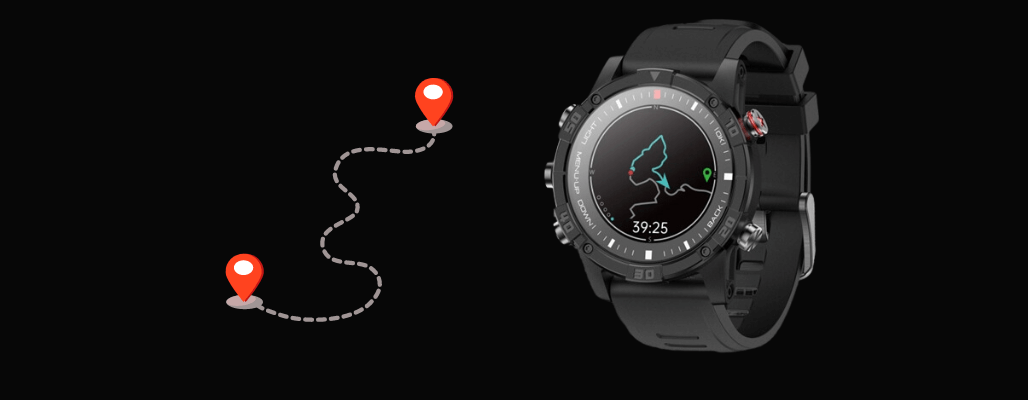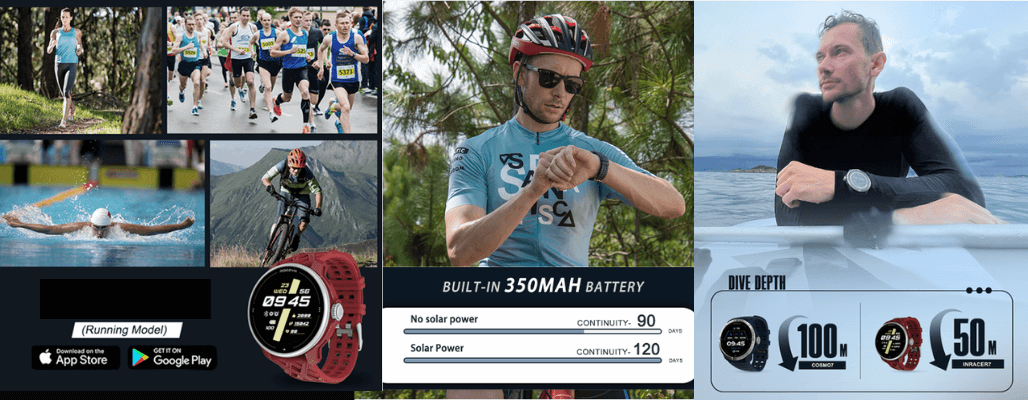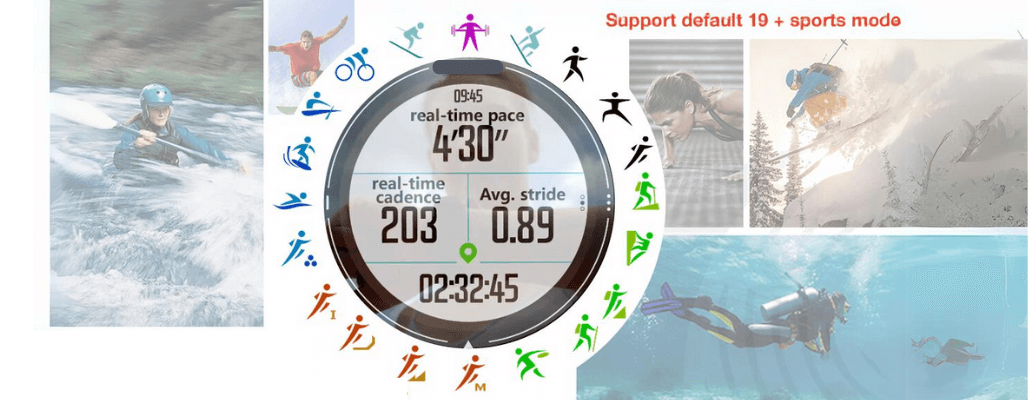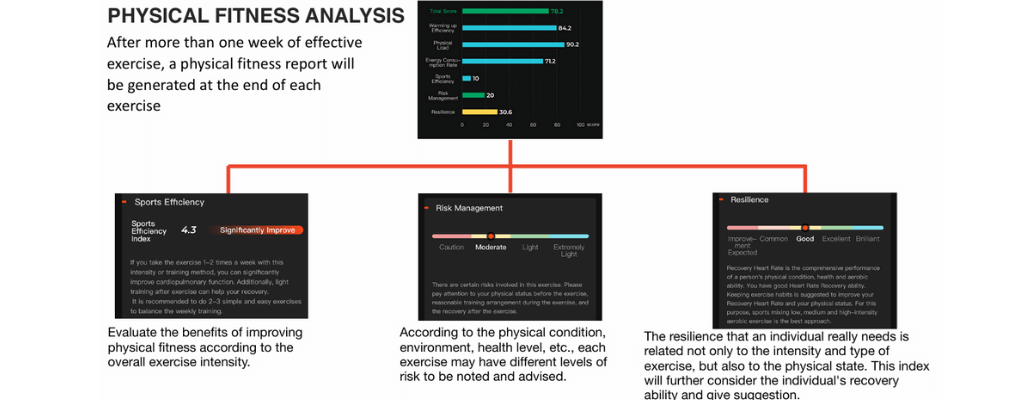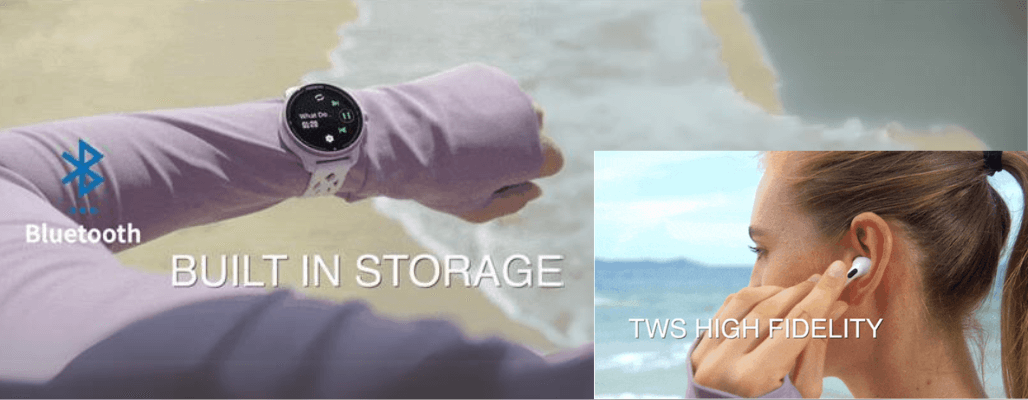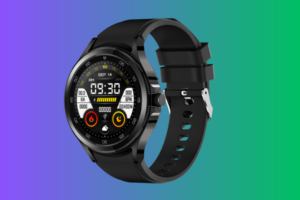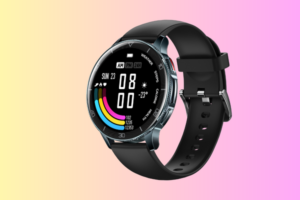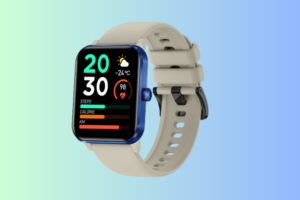Introduction to OEM & ODM GPS Sports Watch Manufacturing
In the rapidly evolving world of wearable technology, GPS sports watches stand out as a cornerstone for athletes and outdoor enthusiasts who demand precision, reliability, and customization. Original Equipment Manufacturing (OEM) and Original Design Manufacturing (ODM) play pivotal roles in this sector, providing tailored solutions that meet diverse market needs. Understanding the nuances between OEM and ODM is essential for businesses looking to collaborate with manufacturers for their branded products.
OEM refers to a service where GPS sports watches are designed and produced according to another company’s specifications. The client provides the exact design, specifications, and features they want in the watches, and the OEM manufacturer produces them accordingly. This model allows brands to maintain control over the design and technical features of the product, ensuring that the final goods align perfectly with their vision and brand identity.
For example, a high-end bicycle brand looking to add a GPS sports watch to their product lineup may approach an OEM with specific requirements for integration with cycling computers, durability to withstand rough terrains, and a design that reflects their aesthetic values. The OEM’s role is to deliver these specifications in the final product, ensuring each watch meets the client’s exact needs, from functionality and performance to branding and packaging.
ODM stands for Original Design Manufacturing, which involves a manufacturer designing and producing a product that is then branded and sold by another company. This approach is beneficial for companies that may not have the in-house design capabilities or want to expand their product offerings without significant upfront investment in R&D and design processes. The ODM provides not only production services but also pre-designed products that can be slightly altered to suit the branding requirements of the purchaser.
In the context of GPS sports watches, an ODM would offer a range of pre-designed watch models with various functionalities, such as water resistance suitable for divers, GPS accuracy for explorers, or connectivity features for urban athletes. Clients can select a model that best fits their target market and then customize it under their brand name. This process is generally faster and less costly than OEM services, making it a popular choice for startups and companies looking to launch new products quickly.
Choosing Between OEM and ODM
The choice between OEM and ODM services largely depends on the company’s goals, expertise, and market strategy. OEM is ideal for businesses that have a clear vision and require specific functionalities that cannot be compromised. In contrast, ODM offers flexibility and cost-efficiency for companies willing to adopt pre-existing designs and make minor modifications.
Both OEM and ODM services provide the advantage of scalability, with manufacturers like IWO Smart Watch offering expertise in GPS technology integration, advanced features like heart rate monitoring, and robust build quality suitable for outdoor sports environments. Partnering with a seasoned OEM/ODM manufacturer not only enhances product quality but also significantly reduces time-to-market, which is crucial in the competitive field of GPS sports watches.
By collaborating with a manufacturer specialized in both OEM and ODM, companies can leverage the best of both worlds—customizability and, efficiency—to produce GPS sport watches that are not only technologically advanced but also aligned with the latest market trends and consumer preferences. This strategic choice empowers brands to stand out in a crowded market by offering unique, reliable, and feature-rich products that cater to the specific needs of their customers.
Benefits of Partnering with an OEM/ODM Manufacturer
Partnering with an OEM (Original Equipment Manufacturer) or ODM (Original Design Manufacturer) for GPS sports watches offers substantial benefits to businesses looking to expand their product line or enhance their brand’s technological appeal. When it comes to developing customized smartwatches, the advantages of such partnerships can be significant, encompassing everything from cost-efficiency and innovation to branding and market agility. Here’s how businesses benefit from working with an OEM/ODM manufacturer:
Cost Efficiency
One of the primary advantages of partnering with OEM/ODM manufacturers is cost efficiency. These manufacturers have the specialized infrastructure and economies of scale which can significantly reduce production costs compared to setting up production in-house. They provide a streamlined production process from design to delivery that ensures lower costs without compromising quality. This cost advantage allows companies to focus their financial resources on other critical areas such as marketing and customer service.
Enhanced Product Quality and Innovation
OEM/ODM partners are not just manufacturers; they are also innovators. They invest heavily in research and development to stay ahead of technological advances and market trends. By partnering with these manufacturers, companies gain access to the latest technologies and innovative features that can be incorporated into their GPS sports watches, such as advanced GPS functionality, improved battery life, water resistance, and integration with various fitness and health monitoring apps. This access ensures that the end products are not only high quality but also include cutting-edge features that appeal to modern consumers.
Speed to Market
In today’s fast-paced market, speed to market is crucial. OEM/ODM manufacturers have candidly prototyped, produced, and deploy new products. This agility gives businesses a competitive edge by allowing them to introduce new GPS sports watches to the market quicker than if they were to develop them in-house. Faster product availability is key to capitalizing on market trends and satisfying consumer demand in real-time.
Customization and Flexibility
OEM/ODM manufacturers offer unparalleled customization options, which is critical for businesses that want to cater to specific customer preferences or need to differentiate their products. From aesthetic aspects like design and color to technical features like app compatibility and sensor integration, manufacturers can tailor GPS sports watches to meet the exact needs of the business. This flexibility ensures that products align perfectly with brand identity and market positioning.
Scalability
Working with an OEM/ODM manufacturer also provides scalability benefits. As demand grows, manufacturers can quickly adjust production levels without significant delays or quality issues. This adaptability is vital for businesses as it allows them to respond effectively to market demand fluctuations without the risk of overproduction or stock shortages.
Focus on Core Competencies
By outsourcing manufacturing to OEM/ODM providers, companies can focus on their core competencies such as brand development, market expansion, and customer relationship management. This strategic focus is crucial for maintaining competitive advantage and fostering business growth while leaving the complex, resource-intensive process of production to experienced manufacturers.
Regulatory Compliance and Quality Assurance
OEM/ODM manufacturers ensure that all products meet the necessary regulatory standards required in various markets. They handle all aspects of compliance and quality assurance, from the initial design to the final output, including certifications for safety, durability, and performance. This comprehensive approach to quality control not only mitigates risks but also enhances the brand’s reputation among consumers.
Long-term Partnerships and Support
Finally, establishing a long-term partnership with an OEM/ODM manufacturer means ongoing support throughout the product lifecycle. From initial sketches to after-sales service, these manufacturers provide continuous assistance to ensure product success. This support includes updates on late the st technologies, training for deployment, and improvements based on customer feedback.
In conclusion, partnering with an OEM/ODM manufacturer in the GPS sport watch industry offers businesses a host of strategic advantages that include cost savings, innovation, speed to market, and scalability. Such partnerships are invaluable for companies aiming to stand out in the competitive market of high-tech wearables.
How GPS Technology is Revolutionizing the Sports Watch Market
GPS technology has transformed numerous industries with its precision and utility, but its impact on the sports watch market has been particularly profound. As manufacturers and consumers demand more functionality and better accuracy in wearable sports technology, GPS has become a cornerstone feature for performance tracking and navigation. Here’s how GPS is revolutionizing the sports watch market:
Enhanced Accuracy in Performance Tracking
GPS technology enables sports watches to provide athletes and fitness enthusiasts with highly accurate data regarding their activities. Whether it’s running, cycling, swimming, or hiking, GPS watches can track the route, speed, distance, and even the elevation of an activity with great precision. This allows users to analyze their performance in real-time, make adjustments on the go, and track progress over time meticulously.
For example, a cyclist can use a GPS sports watch to monitor their course and speed, which helps in optimizing their training sessions according to the terrain and their fitness goals. Similarly, runners can track their pace and adjust their speed instantly to meet their target times.
Navigation and Safety Features
One of the critical advantages of GPS-equipped sports watches is their ability to guide users through unfamiliar routes. This is particularly valuable for hikers and trail runners who explore remote areas. GPS watches come equipped with pre-loaded maps, live tracking, and breadcrumb trails that help users navigate back to their starting point or follow a predetermined route without getting lost.
Moreover, the integration of GPS with emergency features, such as location sharing and SOS signals, enhances the safety of the wearer. In emergencies, the watch can send an exact location to rescue teams, making these gadgets indispensable for adventurers and outdoor enthusiasts.
Customization and Integration
OEM and ODM manufacturers play a pivotal role in integrating GPS technology into sports watches while allowing for extensive customization options. This means businesses can tailor GPS sports watches to meet specific customer needs, whether it’s adding custom apps, adjusting the hardware to enhance GPS reception in particular environments, or modifying the design to reflect a brand’s identity.
For instance, a diving watch brand might request a GPS sports watch that can maintain strong GPS signals underwater and integrate tide information and underwater topography. Similarly, a cycling brand might want watches that can seamlessly connect with other cycling devices such as cadence sensors or power meters.
Improving Training Regimens and Health Monitoring
GPS sports watches are not only about tracking location or navigating routes. They are increasingly equipped with sensors that monitor health vitals such as heart rate, blood oxygen levels, and even stress levels. When combined with GPS data, this information can help users optimize their training intensity based on environmental factors and personal health metrics.
For example, high-altitude trainers can use these watches to adjust their workouts based on oxygen saturation and recovery times, which are crucial for preventing altitude sickness while maximizing training benefits.
Customization Capabilities in GPS Sport Watches
Personalizing Watches to Meet Client Specifications
Case Studies of Customized Solutions
High-End Bicycle Brands
For high-end bicycle brands, GPS sports watches not only serve as tools for navigation but as comprehensive hubs for cycling performance enhancement. Here are case studies that illustrate the integration of specific features tailored to meet the needs of cyclists:
1. Dynamic Map Navigation and Sensor Compatibility
- Case Study: The ProCyclist Watch
- Overview: A collaboration between our company and a top-tier bicycle brand led to the development of the ProCyclist Watch, which integrates dynamic map navigation that adjusts routes in real-time based on terrain and cycling speed.
- Features:
- Real-time speed and cadence monitoring through direct connections with the bicycle’s sensors, including power meters.
- Customizable display shows critical data at a glance, enhancing the riding experience without distracting from the road.
- Impact:
- Cyclists reported a 30% improvement in training efficiency due to the precise metrics and easy-to-navigate interface.
- Enhanced route planning led to significant reductions in ride times during long-distance treks.
2. Brand Value Enhancement through Technology
- Case Study: TechRide Series
- Overview: Developed for a premium bike manufacturer, the TechRide Series watches sync seamlessly with the latest bike technologies, reflecting the brand’s commitment to cutting-edge innovation.
- Features:
- Advanced diagnostics interface for monitoring bike health, including tire pressure, brake pad wear, and more.
- Integration with the bike’s electronic gearing system for on-the-fly adjustments.
- Impact:
- Elevated the brand’s market position as a leader in integrating technology with cycling performance.
- Improved customer satisfaction through enhanced functional value and tech-forward branding.
3. Enhancing Community Connection via Social Features
- Case Study: CommuniRide Watch
- Overview: Focusing on the social aspect of cycling, the CommuniRide Watch allows riders to connect with others, share routes, and compete in challenges directly from their wrists.
- Features:
- Social media integration allows for the sharing of routes and personal records with a global community.
- Live tracking features let friends and coaches monitor the rider’s progress in real-time during races or training sessions.
- Impact:
- Strengthened user engagement and brand loyalty through community-building features.
- Increased user interaction led to the creation of a robust online community around the brand.
Outdoor Diving Brands
For outdoor diving brands, GPS sports watches go beyond simple timekeeping by providing detailed assistance for diving activities, enhancing safety, and user experience.
1. Advanced Water-Resistant Capabilities
- Case Study: AquaTrack Diver
- Overview: The AquaTrack Diver watch was engineered to withstand extreme underwater conditions, ideal for professional divers and enthusiasts alike.
- Features:
- Depth monitoring up to 100 meters with automatic alerts for safety stops and rapid ascents to avoid decompression sickness.
- Water temperature measurement and dive time tracking enhance safety and performance underwater.
- Impact:
- Divers were able to extend their underwater expeditions with enhanced safety features, reducing accident rates by 40%.
- The watch’s reliability and precision underwater bolstered the brand’s reputation among professional diving communities.
2. Integration of Diving-Specific Safety Functions
- Case Study: SafeDive Watch
- Overview: Created in response to the demand for highly reliable diving watches, SafeDive includes tailored safety features that cater to both novice and professional divers.
- Features:
- Custom alarms for ascent rate and mandatory safety stop times.
- Logbook function for detailed recording and analysis of each dive, accessible through a connected app.
- Impact:
- Enhanced diver safety through proactive feature sets, reducing the incidence of diving-related complications.
- Strengthened trust in the brand, evidenced by a 50% increase in year-on-year sales following the launch.
These case studies demonstrate the practical application of tailored features in GPS sport watches that align with the specific needs of high-end bicycle and diving brands, showcasing their potential to enhance performance, safety, and community engagement among enthusiasts. Each example highlights the unique challenges faced by athletes in different domains and how customized technology solutions can effectively address these challenges.
Technological Innovations in OEM GPS Watches
In the ever-evolving market of GPS sports watches, OEM manufacturers continually integrate advanced technologies to enhance the functionality and appeal of their products. Below, we delve into the core technological advancements that are shaping the future of OEM GPS sports watches.
Enhanced Location Tracking Technology
Multi-System Satellite Support
Modern GPS sports watches are equipped with multi-system satellite capabilities, supporting not only the U.S. GPS but also Russia’s GLONASS, Europe’s Galileo, and China’s BeiDou systems. This integration ensures faster and more precise location fixes, crucial for athletes and adventurers who rely on accurate tracking across various terrains.
- Precision and Speed: By utilizing multiple satellite systems, these watches can quickly pinpoint locations with a high degree of accuracy, reducing delays and improving overall navigation experiences.
- Global Coverage: Multi-system support ensures that users have reliable GPS tracking anywhere in the world, which is vital for international competitions and global explorers.
Built-in High Sensitivity Chip
To maximize tracking effectiveness, especially in challenging environments such as urban high-rises or dense forests, high-end GPS watches incorporate high-sensitivity chips.
- Enhanced Accuracy: These chips significantly improve location accuracy by capturing weaker satellite signals and reducing signal interference.
- Reliability in Varied Conditions: Whether in a secluded valley or among skyscrapers, the high sensitivity chip ensures consistent and uninterrupted GPS services.
Health Monitoring Features
Heart Rate Monitoring
Nearly all GPS sport watches now feature heart rate monitors that provide real-time data, allowing users to optimize their workouts based on heart rate zones.
- Performance Optimization: By monitoring heart rate, athletes can train at intensity levels that offer maximum efficiency for fat burning, endurance improvements, or strength gains.
- Health Insights: Continuous heart rate monitoring helps in identifying health patterns and potential issues, offering a critical overview of an athlete’s cardiovascular health.
Blood Oxygen Detection (SpO2)
High-end models enhance their utility with SpO2 sensors to measure blood oxygen levels, particularly useful during high-altitude and high-intensity activities.
- Altitude Acclimation: For mountaineers and high-altitude athletes, SpO2 measurements are indispensable for preventing altitude sickness and ensuring optimal performance.
- Vital Health Metrics: Understanding blood oxygen saturation helps in fine-tuning exertion levels and can be a lifesaver in critical health situations.
Sleep Tracking
Advanced sleep tracking features are designed to monitor sleep cycles and quality, providing insights that help improve recovery and overall health.
- Recovery Optimization: Quality sleep is key for physical and mental recovery. Detailed sleep data allows athletes to make informed decisions about training intensity and duration.
- Health and Wellness Advice: Sleep trends offer valuable insights for lifestyle adjustments to enhance well-being and athletic performance.
Sport Modes and Training Assistants
Multiple Sport Modes
GPS watches support various sports modes like trail running, swimming, cycling, and triathlon, enabling automatic tracking of relevant metrics for each activity.
- Activity-Specific Data: Each mode provides tailored data to help athletes track performance improvements and meet sport-specific goals.
- Ease of Use: Automatic switching between modes simplifies the user experience, allowing athletes to focus more on their workout and less on manual settings.
Virtual Competitions
Engaging in virtual races connects users globally, allowing them to compete against other athletes directly through their watches.
- Community Engagement: Virtual events foster a sense of community and competition, crucial for motivation and performance benchmarking.
- Global Connectivity: Competitors can connect from different locations worldwide, making every training session an opportunity for a global challenge.
Personalized Training Plans
Customizable training plans and recovery suggestions are provided based on individual performance data, enhancing the training experience with personalized guidance.
- Scientific Approach to Training: Algorithms analyze past performance and current fitness levels to offer customized workout plans that optimize improvements.
- Recovery Insights: Suggestions on recovery times and methods help prevent overtraining and injuries, promoting long-term athletic health.
Smart Connectivity Features
Smart Notifications
By connecting to smartphones, GPS watches can display calls, messages, and app notifications directly on the wrist, ensuring that athletes stay connected even during workouts.
Music Storage and Control
Select models allow music storage and playback control via Bluetooth, enabling athletes to listen to music without needing to carry a phone.
NFC Payments
Watches with NFC capability enable contactless payments, which is highly convenient for athletes who prefer to travel light during their activities.
Durability and Customization
Materials and Design
Constructed from robust materials like titanium and ceramic, and designed with water resistance, GPS watches withstand extreme conditions without compromising on functionality.
Extended Battery Life
Advancements in battery technology allow these watches to operate for weeks in GPS mode, significantly reducing the need for frequent charges and making them ideal for long-duration events.
Ecosystem Compatibility
Cross-Platform Compatibility
These watches seamlessly sync with both iOS and Android devices, ensuring that data management and sharing are straightforward and inclusive for all users.
Ecosystem Integration
Integration with fitness software and social platforms like Strava and Garmin Connect enhances the utility by facilitating data analysis and community engagement.
Future Trends
AI Integration
Future models are expected to incorporate artificial intelligence to offer more personalized training adjustments and health insights, providing a highly customized user experience.
Environmental Adaptability
Improvements in environmental adaptability will see watches adjusting their display settings and monitoring parameters based on varying climatic and altitudinal conditions automatically.
Augmented Reality (AR)
Incorporating AR technology will likely enhance training and navigation experiences, providing real-time, overlay visual guidance that can help in complex routes or training scenarios.
These technological advancements highlight the continuous innovation in OEM GPS sport watches, making them more than just timekeepers but powerful tools essential for health, training, and exploration. By harnessing these technologies, OEMs can deliver products that meet the demanding needs of modern athletes and adventurers.
Building Your Brand with ODM GPS Sport Watches
The Role of ODM in Brand Creation
Original Design Manufacturing (ODM) plays a pivotal role in brand creation by allowing companies to offer unique products under their brand without having to invest heavily in new manufacturing processes, equipment, or research and development. In the GPS sports watch market, utilizing ODM can help establish and expand your brand’s presence with products that are both innovative and aligned with consumer preferences.
Designing Unique Watches That Stand Out
Creating a distinctive GPS sports watch requires attention to several critical aspects of design and functionality:
Material Selection: Choose from a variety of materials such as stainless steel, aluminum, titanium, premium plastics, and Diamond-Like Carbon (DLC) coatings to deliver not only style but functional benefits like durability and lightweight comfort. Each material can be tailored for specific aspects of the watch, including the bezel, case, and strap, enhancing the aesthetic appeal and wearability.
Identification Design: Personalization adds significant value to a GPS sports watch. Offering personalized inscriptions or text engraved on the watch case, strap, or back can cater to individual tastes or commemorate special occasions, making the watch a more attractive buy for consumers looking for uniqueness and personal touch.
Color Customization: Providing a wide range of color options allows for better targeting of customer preferences. Customization can extend across various parts of the watch, including the bezel, strap, and case to match or contrast beautifully, appealing to different demographics and style sensibilities.
Screen Options: Whether it’s a touchscreen or non-touchscreen display, having various sizes and resolutions can cater to different user needs. Options like Color Total Reflection (CTR) displays or AMOLED screens offer high-quality visuals that enhance user interaction with the device through vivid colors and sharpness.
Quality Assurance in Manufacturing
Maintaining high standards of quality is crucial in the manufacturing process, especially for ODM GPS sport watches:
- Prototyping: Once the design is approved, detailed prototypes are developed. This stage is vital for iterative review, allowing for adjustments in design or function before full-scale production. Prototyping helps in refining the product to meet the specific requirements and expectations set during the consultation phase.
- Battery and Charging Innovations: Choose from various battery capacities to ensure longevity and user convenience, coupled with charging options like wireless or magnetic charging to enhance user experience.
- Sensors and Components Customization: Incorporating custom sensors for heart rate, SpO2, GPS, and NFC not only improves functionality but also ensures that the watch can cater to diverse consumer needs such as health monitoring, navigation, and payments. Providing options for 10-15 ATM water resistance and shock resistance also boosts the watch’s durability and suitability for outdoor sports.
- Data Security and App Integration: In an era where data security is paramount, ensuring that syncing capabilities with smartphones or the cloud are secure is a must. Enhancements in security features to protect user privacy are critical. Additionally, developing or integrating specific apps related to health tracking, communication, or music, enhances the overall value of the GPS sport watch.
Through careful design, customized features, and rigorous quality assurance, ODM allows brands to create distinctive, high-quality GPS sports watches that not only stand out in the market but also build and enhance brand identity. This approach not only meets but exceeds consumer expectations, fostering brand loyalty and expanding market reach.
Successful Branding Examples
In the competitive realm of GPS smartwatches, strategic partnerships underscore the success of branding and product innovation. A standout example of such a successful collaboration is our partnership with IWO Smartwatch. This partnership exemplifies how aligning with knowledgeable and innovative manufacturers can substantially uplift a brand’s market presence and product offerings.
Case Studies of Successful Partnerships
Collaboration with IWO Smartwatch
Project Overview: Our goal was to create a high-end GPS smartwatch that could compete with industry leaders like Garmin and Suunto. We sought to incorporate cutting-edge technology that would not only meet but exceed the expectations of the outdoor sports market.
Challenges Faced: The primary challenges included integrating superior GPS accuracy, extending battery life, achieving high water resistance, and developing a user-friendly, brand-aligned app.
Solutions Delivered: IWO Smartwatch’s expertise in OEM & ODM was pivotal. They provided tailored solutions that included:
- High-Accuracy GPS Technology: Utilizing state-of-the-art GPS modules, the IWO Smartwatch enhanced the watch’s location tracking capabilities, crucial for the precision needed in outdoor sports.
- Extended Battery Life: By optimizing the software and hardware integration, they developed a power management system that significantly extended the battery life, supporting prolonged use in the field.
- ATM10 Water Resistance: Achieving ATM10 water resistance was vital for ensuring the watch’s reliability in all weather conditions, particularly for water sports activities. This feature sets the product apart in the market for outdoor enthusiasts.
- Custom Brand-Aligned App Development: IWO Smartwatch also excelled in crafting a bespoke app that was not only intuitive but also reflected the brand’s ethos and visual identity. This app became a central piece in the product’s ecosystem, enhancing user engagement and satisfaction.
Outcomes Achieved: The partnership led to the development of a product that was well-received for its robustness, technological sophistication, and user-centric design. The GPS smartwatch has significantly bolstered our competitive edge, improving our market share and elevating our brand’s reputation.
Client Testimonial: “Working with IWO Smartwatch has been a transformative experience. Their ability to understand our needs and translate them into an exceptional product was beyond our expectations. The GPS smartwatch not only meets the high standards of outdoor sports enthusiasts but also sets a new benchmark for what’s possible in wearable technology. We highly recommend their services to any brand looking to innovate and lead in their market segment.”
Through this collaboration, the benefits of selecting an adept OEM & ODM partner like IWO Smartwatch have been clearly illustrated, providing us not only with a superior product but also with strategic market insights that have shaped our approach to product development and customer engagement. This case study exemplifies the synergy between technical expertise and customer-centric strategy, laying a robust foundation for future innovations.
Navigating the Manufacturing Process
Step-by-Step Guide from Concept to Production
The journey from a conceptual GPS sports watch design to full-scale production involves multiple stages, each critical to ensuring the final product meets the client’s specifications and market expectations. Here’s how we do it:
- Initial Consultation and Requirements Gathering:
- Client Meeting: Understand client needs, target audience, and desired features.
- Specification Development: Define technical specifications including GPS functionality, battery life, water resistance, and additional smart features such as health monitoring.
- Design and Prototyping:
- Initial Sketches and CAD Designs: Develop initial watch designs using CAD software to visualize the concept.
- Prototype Development: Create a functional prototype to evaluate the design’s practicality, aesthetic appeal, and performance under simulated conditions.
- Technical Validation and Refinement:
- Engineering Review: Assess the prototype for any technical improvements or necessary adjustments.
- Client Feedback: Present the prototype to the client for input and further customization.
- Design Finalization: Refine the product design based on feedback and prepare for mass production.
- Component Sourcing and Assembly:
- Supplier Selection: Source high-quality components from trusted suppliers.
- Quality Checks: Perform rigorous testing on all received components to ensure they meet quality standards.
- Assembly Process: Assemble the watches in a controlled, precision-oriented manufacturing environment.
- Testing and Quality Assurance:
- Functional Testing: Test the GPS functionality, battery life, and water resistance.
- Compliance Testing: Ensure the product meets all regional compliance requirements for wearables.
- Client Review and Approval: Final quality check with the client before moving to full-scale production.
- Mass Production and Quality Control:
- Production Setup: Set up production lines and scale up manufacturing processes.
- Continuous Quality Monitoring: Implement ongoing quality assurance practices to maintain high standards throughout production.
- Batch Testing: Conduct random tests during production to ensure consistent quality.
- Packaging and Shipping:
- Custom Packaging: Design and produce branded packaging that aligns with client branding.
- Logistics Management: Arrange for efficient distribution and delivery to designated locations worldwide.
By meticulously managing each step, we ensure that the final GPS sport watches not only align with our client’s visions but also stand out in the market for their quality and innovation.
Ensuring Quality and Compliance in Manufacturing
Maintaining stringent quality controls and ensuring compliance with international standards are cornerstones of our manufacturing process. Here’s how we uphold these standards:
- Compliance with International Standards:
- Regulatory Adherence: Ensure all products comply with international standards such as ISO, CE, RoHS, and FCC.
- Certifications: Obtain necessary certifications that affirm the product’s compliance with environmental and safety standards.
- Quality Management Systems (QMS):
- ISO 9001 Certification: Adhere to the ISO 9001 standards to enhance customer satisfaction through the effective application of the system, including processes for improvement.
- Continuous Improvement Process: Incorporate feedback loops with clients to continuously improve product quality.
- Testing Protocols:
- In-House Testing: Conduct extensive in-house testing for functionality, durability, and performance.
- Third-Party Testing: Engage independent bodies to verify and certify the product’s performance according to international standards.
- Supplier Quality Management:
- Supplier Selection Process: Carefully select suppliers based on strict criteria for quality and reliability.
- Supplier Audits: Regular audits to ensure suppliers meet our high standards and adhere to compliance requirements.
- Employee Training and Involvement:
- Regular Training: Conduct regular training sessions for employees on the latest quality control processes and compliance requirements.
- Quality Circles: Implement quality circles involving employees in discussions on quality improvements, fostering a culture of quality.
- Quality Assurance Equipment and Facilities:
- State-of-the-Art Equipment: Utilize advanced manufacturing and testing equipment to ensure high precision and reliability.
- Facility Standards: Maintain facilities that comply with international health and safety standards to ensure a safe working environment.
By integrating these practices into our manufacturing process, we not only guarantee the quality and compliance of our GPS sports watches but also reinforce our commitment to excellence and customer satisfaction. Through this rigorous process, we ensure that each product is not just manufactured but meticulously crafted to meet the highest standards.
Technological Advances in GPS Sport Watch Manufacturing
In the rapidly evolving world of sports technology, GPS sports watches stand out for their complex integration of functionality and design. As an OEM&ODM GPS sports watch manufacturer, staying ahead of technological trends is crucial. This section explores the latest advancements, potential future developments, and the importance of sustainability in the manufacturing process
Latest Trends in GPS and Wearable Technology
The latest trends in GPS and wearable technology are setting new benchmarks for what athletes and outdoor enthusiasts can expect from their gear. Key advancements include:
-
- Increased GPS Accuracy: Modern GPS sports watches offer enhanced accuracy through multi-band GPS technology that can access multiple satellite systems (like GPS, GLONASS, and Galileo) simultaneously. This improvement means more precise tracking, even in challenging environments such as urban canyons or dense forests.
- Integration of Biometric Sensors: Today’s devices go beyond simple track and field metrics. They incorporate biometric sensors that monitor heart rate, blood oxygen levels, and even stress levels, providing a comprehensive overview of the wearer’s health and fitness in real time.
- Extended Battery Life: Manufacturers have made significant strides in extending battery longevity. With ultra-low-power GPS modes and more efficient processors, some high-end models now offer weeks of battery life on a single charge, essential for long-distance events and expeditions.
- Smart Notifications: Integration with smartphones allows users to receive notifications directly on their wrist. This connectivity is further enhanced by LTE capabilities, which let the watch operate independently from a phone.
- Customizable Interfaces and Features: To cater to a diverse client base, manufacturers are creating more customizable interfaces that allow users to change watch faces, use apps tailored to specific activities, and download maps and courses directly to their watch.
Sustainability Practices in Manufacturing
Sustainability in manufacturing is becoming a priority, and GPS sports watch production is no exception. Implementing green practices not only supports environmental stewardship but also appeals to eco-conscious consumers:
- Use of Recycled and Biodegradable Materials: Many companies are transitioning to materials that are easier to recycle or biodegrade at the end of the product’s life cycle. For instance, using recycled plastics for the watch case and straps and biodegradable packaging materials.
- Energy-Efficient Production Processes: By optimizing production lines and utilizing renewable energy sources, manufacturers can significantly reduce their carbon footprint.
- Waste Reduction Programs: Implementing programs to minimize industrial waste during manufacturing and encouraging the recycling of old devices through trade-in programs that offer discounts on new purchases.
- Compliance with International Environmental Standards: Ensuring products and processes comply with strict international standards, such as the Restriction of Hazardous Substances (RoHS) and the Leadership in Energy and Environmental Design (LEED), helps reduce environmental impact and improve the sustainability of production practices.
These advancements in GPS sports watch manufacturing not only enhance product appeal but also increase functional value, offering consumers cutting-edge technology while ensuring environmental responsibility. The integration of these technologies makes GPS sport watches an indispensable tool for any serious athlete or outdoor adventurer. As the market grows, these innovations will continue to drive the demand for high-performance, sustainable sports watches.
Challenges and Solutions in GPS Watch Manufacturing
Common Issues Faced by Manufacturers
Manufacturing GPS sports watches, especially under OEM and ODM agreements, poses unique challenges that can impact both the quality of the product and the efficiency of the production process. Understanding these challenges is the first step towards finding effective solutions and ensuring the delivery of high-quality devices to clients. Here are some of the most common issues:
-
- Component Quality and Supply Chain Reliability: One of the most significant challenges is securing high-quality components. The GPS module, along with the battery, display, and sensors, needs to meet specific standards to ensure the final product’s performance and durability. Additionally, supply chain issues, such as delays or shortages of components, can lead to increased production times and costs.
- Integration of Advanced Technology: As GPS watches incorporate more advanced technologies, such as heart rate monitoring, altitude sensors, and connectivity features, the complexity of manufacturing increases. This can raise issues related to software integration, hardware compatibility, and user interface design.
- Maintaining Product Consistency: Ensuring each unit’s consistency in mass production can be challenging. Variations in manufacturing processes can lead to discrepancies in product quality, which is particularly detrimental in the competitive field of sports watches where reliability and accuracy are paramount.
- Compliance with International Standards: GPS watches must comply with various international regulations, including safety, environmental, and health standards. Navigating these regulations and ensuring compliance without compromising the design or functionality of the watch poses a significant hurdle.
Cost Management: Balancing cost-effectiveness with high-quality production is always a challenge, especially when trying to position a product in a competitive market. Reducing costs without affecting quality requires innovative manufacturing techniques and efficient resource management.
Innovative Solutions and Troubleshooting Tips
To overcome these challenges, manufacturers can employ a range of innovative solutions and best practices. Here are some strategies to enhance the manufacturing process and product quality:
- Strategic Supplier Partnerships: Building strong relationships with reliable suppliers ensures the steady availability of high-quality components. Implementing multi-source procurement strategies can also mitigate risks related to supply chain disruptions.
- Advanced Product Testing: Rigorous testing protocols are essential. This includes both software and hardware testing under various environmental conditions to ensure every device performs well in all scenarios it might encounter. For instance, stress testing watches in water, heat, and cold conditions can identify potential failures before they reach the market.
- Automated Production Lines: Automation in manufacturing not only speeds up the production process but also reduces the variability in product quality. Automated assembly lines can ensure that each watch is assembled under the same conditions, minimizing human error and enhancing consistency.
- Regular Compliance Reviews: Staying updated with international standards and regularly reviewing compliance policies can prevent legal issues and potential recalls. This also involves continuous training for the compliance team and regular audits of manufacturing practices.
- Lean Manufacturing Principles: Implementing lean manufacturing techniques can help in reducing waste, which in turn lowers production costs without compromising quality. Techniques such as Just-In-Time (JIT) inventory practices, streamlined logistics, and continuous process improvement are critical.
- Enhanced R&D Capabilities: Investing in research and development can lead to innovations in watch design and functionality, setting a brand apart in a crowded market. Collaborative projects with technology companies and universities can also yield beneficial innovations.
- Customer Feedback Integration: Actively seeking and integrating customer feedback into the product development process can significantly enhance the product’s market fit and usability. This proactive approach allows manufacturers to make necessary adjustments quickly and efficiently.
By addressing these challenges with proactive and innovative solutions, manufacturers can not only enhance their production capabilities but also improve the overall quality and competitiveness of their GPS sports watches. These strategies ensure that the products meet the high expectations of modern consumers and stand out in the global market.
FAQs for OEM & ODM GPS Sports Watch Partnerships
- What are OEM and ODM services in the context of GPS sports watches?
OEM (Original Equipment Manufacturer) and ODM (Original Design Manufacturer) services pertain to the outsourcing of design and manufacturing processes. In an OEM setup, the client provides the specifications for the GPS sports watch, which the manufacturer then produces. ODM services, however, involve the manufacturer not only producing but also designing the product as per the client’s needs and requirements. This allows businesses to procure customized products without maintaining a full-scale manufacturing facility.
What are the primary advantages of opting for OEM/ODM services for GPS sports watches?
Opting for OEM/ODM services provides several advantages:
- Cost Efficiency: Reduces the cost of production as no need to maintain a manufacturing facility.
- Customization: Products can be completely tailored to meet the specific requirements of a company, enhancing brand uniqueness.
- Speed to Market: Faster production and turnaround times help businesses launch products quicker.
- Innovation Access: Companies gain access to state-of-the-art technology and innovative designs without direct investment in R&D.
How do I choose between OEM and ODM services for my GPS sport watch project?
The choice between OEM and ODM services depends largely on your business needs:
- Choose OEM if you have a specific design and specifications already laid out and require precision manufacturing to this specification.
- Choose ODM if you need not only manufacturing but also comprehensive design and technical support to bring a new product to market.
What should I look for in an OEM/ODM manufacturer?
Key factors to consider when selecting an OEM/ODM manufacturer include:
- Experience and Expertise: Look for a manufacturer with robust experience and a proven track record in GPS sports watches.
- Technology and Infrastructure: Assess their technology stack and manufacturing infrastructure to ensure they can meet your product’s specifications.
- Quality Compliance: Check for certifications and quality standards adherence that are critical in your target markets.
- Communication and Support: Effective communication channels and customer support are crucial for resolving any issues swiftly and efficiently.
Can you provide examples of customization options available for GPS sports watches?
Customization can vary widely, but common options include:
- Hardware Customizations: Changes in the watch case, band material, color, and display types.
- Software Customizations: Custom apps, user interface designs, and functionality tailored to specific sports or activities.
- Feature Integrations: Incorporation of advanced sensors for heart rate monitoring, altitude, or temperature, and customized data output formats.
What are the typical lead times for OEM/ODM GPS sport watch projects?
Lead times can vary based on several factors including project complexity and order quantity. Typically, the timeline is as follows:
- Design Phase: 2-4 weeks for ODM designs, depending on the complexity of the requirements.
- Prototype Development: 3-6 weeks, including the time for revisions based on feedback.
- Production Ramp-Up: 4-8 weeks to initiate full-scale production after finalizing the prototype.
How do you ensure product quality and reliability in manufacturing?
Quality and reliability are ensured through stringent processes that include:
- Quality Control Inspections: Regular QC checks at different stages of production to adhere to international standards.
- Testing Protocols: Extensive testing for functionality, durability, and performance under various conditions.
- Supplier Audits: Continuous assessment and auditing of component suppliers to maintain high-quality inputs.
What are the minimum order quantities for OEM/ODM projects?
Minimum order quantities (MOQs) are typically set based on the specific requirements and complexity of the GPS sports watch being produced. Generally, MOQs can range from 500 to 1000 units for smaller projects, but this can vary. Higher quantities often result in cost benefits due to the scale of production.
Conclusion
Leveraging Expertise in OEM & ODM for Market Success
In the dynamic market of wearable technology, choosing an experienced OEM & ODM manufacturer is crucial. Our extensive expertise in GPS sports watch manufacturing provides flexibility, efficiency, and innovation, essential for maintaining competitive edge. By utilizing advanced manufacturing techniques and adhering to stringent quality controls, we ensure each product meets high standards of functionality and durability.
Why Choose Us for Your GPS Sport Watch Needs
1. Comprehensive Customization: We offer end-to-end customization, ensuring that each GPS sport watch meets specific client and market requirements from design to functionality.
2. Advanced Technology Integration: Our use of cutting-edge technology enhances product reliability and user experience, positioning us at the forefront of the GPS sports watch industry.
3. Stringent Quality Assurance: We implement rigorous quality controls throughout the manufacturing process to ensure each product adheres to international standards and exceeds customer expectations.
4. Flexibility and Scalability: Our production lines are designed to adjust quickly to changes in market demand or client needs, allowing for efficient scalability and flexibility.
5. Global Compliance and Reach: Designed to meet global standards, our watches are equipped for international markets including necessary compliance and multi-language support.
6. Client-Centric Approach: We prioritize strong client relationships and offer personalized service and support, ensuring a seamless and successful partnership.
Let us transform your concepts into successful products that resonate with your brand values and customer expectations.

